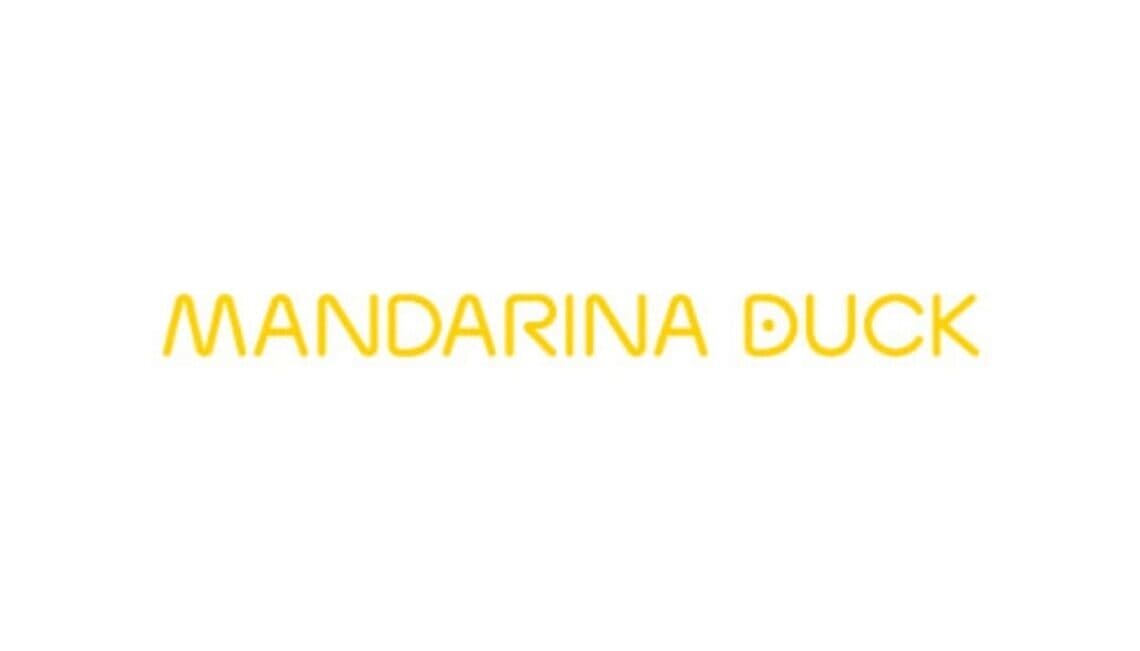
Mandarina Duck
Mandarina Duck is an Italian brand of bags, luggage and clothing founded by Paolo Trento and Pietro Mannato. The name is inspired by a Mandarin duck living on the banks of the Ussuri river.
Seven is the company Finduck’s lucky number: it launched its first Mandarina Duck bag in 1977 and its first collection of clothing in 1997 under the same label. The brand embodies the style known as urban chic. It combines parchment-like textiles with opaque nylon. Md20, the successful youth line from 1989, employed mitrix, an exclusive textile made of 50% nylon and 50% polyester. Their production covers bags, suitcases, and rucksacks, and jackets and pants. Some pieces are on display at the Museum of Decorative Arts in Berlin.
Twenty-two artists were chosen for the Mandarina Duck Award by a jury of six. The initiative was featured in the magazine Search for Art, run by a non-profit committee promoting forms of art outside the traditional channels. This project attracted thousands of artists.

The positive years for the company
2000 was a positive year for the Finduck group, the holding that controls the Mandarina Duck, Lamarthe and Tibaldi brands. It had a turnover of 102 million dollars, which represented a 15% growth.
Turnover in 2001 reached 122 million dollars (20% growth) and profits doubled to 15 millions. Record sales in December. For 2002 the focus was on the new collection of jewelry, on sale since the previous fall, and watches, in partnership with Seiko.
A polyhedral, multifunctional bag was designed exclusively for Ford Focus. It can be attached to the rear seat of the car and holds equipment for the office, such as floppy disks and cds, as well as drinks, clothing, and other objects. Removed from the seat, it can be carried around the neck or on wheels like a trolley.
The prêt-à-porter Spring-Summer 2003 collection was presented at the Place VendÂme in Paris. Production was by Mondrian in Vignola (Modena), while the design and distribution remained with Finduck. The collection was designed by George Gottle in harmony with the style of the bags: elegant sportswear based on technical materials. The turnover for 2001 closed at 103 million euros (a 20% increase on the previous year).
Some new collaborations
A new store opened in London in Conduit Street, designed by the Dutch Marcel Wanders, who had already collaborated on the collection of Murano bags.
At the International Exhibition of Architecture in Venice, Mandarina Duck and Droog Design received a prize for their collaborative project. Droog Design also designed the Mandarina Duck Paris store.
The Finduck Group closed 2002 with a turnover of 110 million euros, an increase of 10% on 2001. It expanded its partnerships. It collaborated with Visibilia for glasses and with the Spanish company Idesa (Idea Parfums) for a collection of perfumes and cosmetics. Following the partnership with the Japanese company Seiko for watches (50 thousand sold in 7 months), 15 million euros of investments in cosmetics were planned by 2006.
A difficult period
In 2003, the company gets into difficulty, with turnover dropping by 19% and accounts in the red. So in 2004 Lamarthe was sold. Mandarina Duck also experienced a black period, with turnover plummeting from 50 to around 30 million in 2011. And that very year it is sold to the Koreans of E-Land. In 2015 Mandarina Duck leaves Bologna, the headquarters is moved to Milan in via Tortona. In 2016, the company opened a flagship store in Milan on Via Brera and also returned to European markets that had been abandoned at the time, in Spain, Germany, Austria, France, Benelux.
You may also like:


